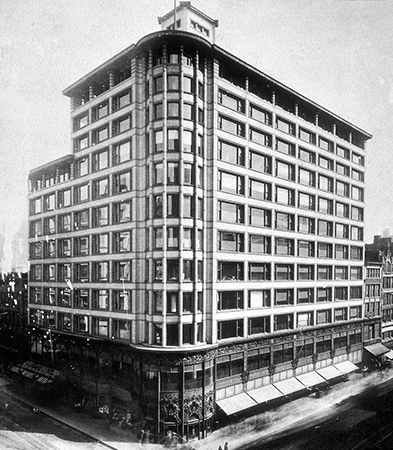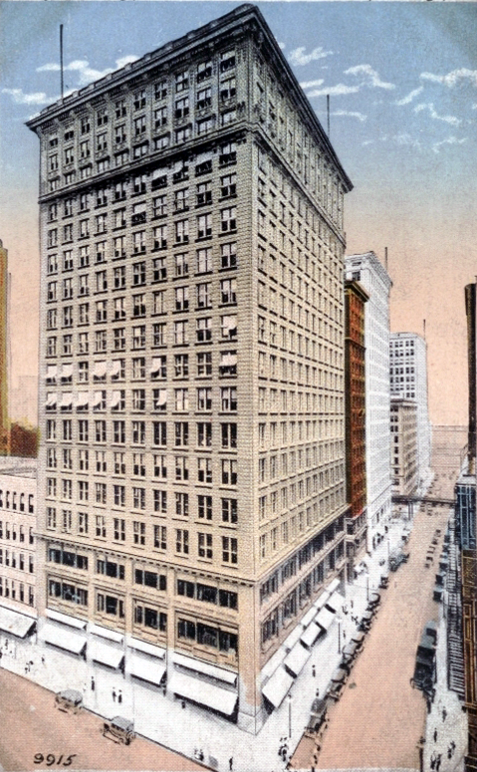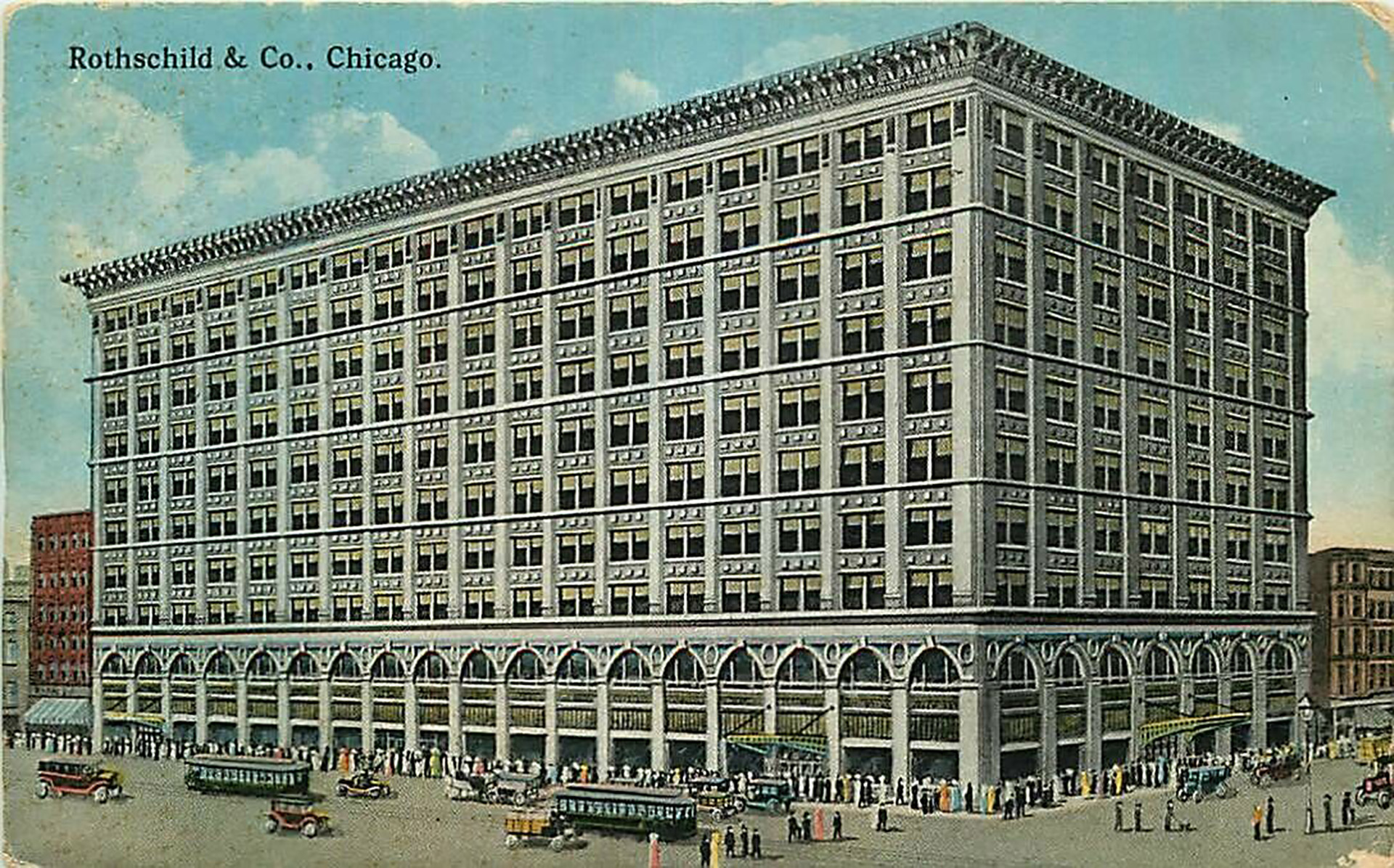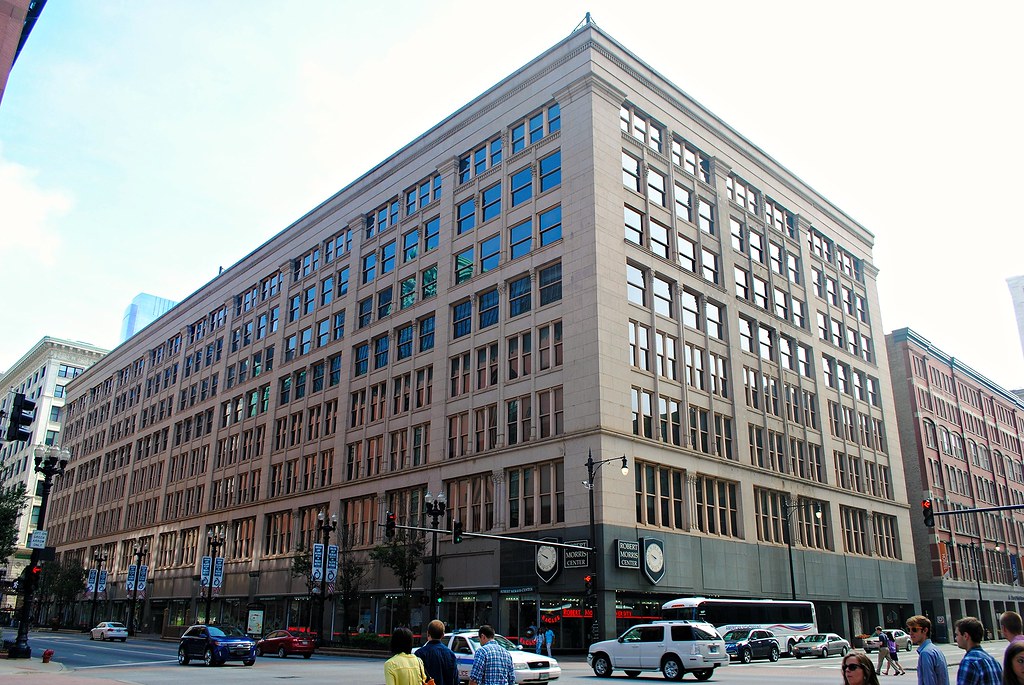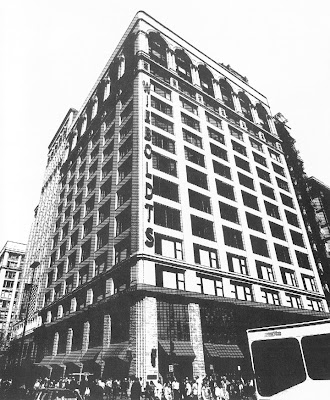– By Tom Schaffner
For more stories about Chicago’s fascinating history, take a look at what Chicago city tours we are currently running! L Stop Tours runs unique tours all across Chicago’s neighborhoods that are guided by lifelong Chicago residents. Discover the amazing architecture, tasty food, and interesting tidbits about the city in one of our Chicago walking tours!
Before Amazon, before smart phones and before the internet, Chicago residents shopped at Loop department stores — retail emporiums that offered a wide range of products and services to customers and patrons. Urban department stores at the time were cavernous, trendy, fashionable, service-oriented and, most of all, convenient. Everything you could ever want or need was contained within a massive, multi-story building that sprawled like a behemoth over a large city lot in the central business district.
Department stores, however, weren’t always kings of the retail hill. Before department stores became fixtures in the Loop and outlying neighborhoods, several Chicago-area retail merchandisers created thick, paper-bound catalogs that were distributed to customers across the nation. Using the U.S. Postal Service and the extensive network of railroads that converged in Chicago to ship orders, retailers with catalogs were able to create a virtual department store. They provided products and services to customers throughout the country, to shoppers who never even set foot in Chicago. Catalogs were a huge success.
Catalogs, however, did little for retail customers who wanted an in-person shopping experience — people who wanted to discuss product attributes with knowledgeable sales associates, view colorful store decorations and display windows or enjoy a gourmet lunch in one of the store’s dining rooms. This is where department stores shined and in the years following the Great Fire (1871 to 1910), department stores began to sprout in Chicago like dandelions, especially on State Street in the Loop.
The following is a list of department stores that, over the years, operated on or near State Street:
Marshall Field & Company/Macy’s
One of the most admired department stores in the world, Marshall Field & Company’s roots in Chicago go back to 1852 when Mr. Field and partner (and future hotelier) Potter Palmer opened a dry goods store on Lake St. in the central business district. Between 1892 and 1906, several buildings within the city block bounded by Randolph St. (north), Wabash Ave. (east), Washington St. (south) and State St. (west) were built over a period of time that resulted in a huge, 13-story department colossus, the new flagship store of Marshall Field & Company. The building, which stands today is the third largest store in the world, was declared a national historic landmark in 1978 and in 2005, both the company and the store were purchased by Macy’s, Inc. Macy’s continues to operate the store today but has recently reduced the store’s sales space by leasing floors 8 through 13 to a private real estate developer.
Macy’s has an entire candy section located on the lower level that sells an assortment of goodies but most notably Frango Mints – a store staple since 1918. Nowadays these delicious chocolate mints can be purchased online.
As an Amazon Associate, we earn from qualifying purchases.
Schlesinger & Mayer/Carson Pirie Scott & Co.
In 1899, the dry goods store Schlesinger & Mayer commissioned architect Louis Sullivan to redesign its large downtown department store at 1 S. State Street where it employed over 2,500 people. When the work was completed in 1904, Schlesinger & Mayer was no longer financially able to operate the store. Rival Carson Pirie Scott & Co. moved in and occupied it for more than a century, until 2006. Today the building has been renamed the Sullivan Center — the primary retail space on the first two floors contains a Target store and the upper floors are leased to a variety of smaller businesses and not-for-profit institutions, like the School of the Art Institute. The building was designated a Chicago landmark in 1975.
Henry C. Lytton & Sons
In 1887, men’s clothing retailer Henry Lytton opened a store he called “The Hub” at the northeast corner of State Street and Jackson Boulevard. In 1913, the store moved across the street into a new, 18-story skyscraper known as the Lytton Building. After 99 years of business in the Chicago area, Lytton’s went out of business in 1986. The store building is now owned and used by DePaul University and is part of the Loop Retail Historic District.
Fair Store/S.S. Kresge/Montgomery Ward
In 1875, retailer Ernst J. Lehmann opened a department store on the corner of State and Adams Streets and called it the Fair Store. In 1897, the original edifice was torn down and a modern, 12-story department store occupied the site. In 1925, the Fair business was sold to retailer S.S. Kresge (predecessor firm of Kmart) which occupied the space until 1956. In 1957, Montgomery Ward purchased the store and occupied it until 1984, when it closed. The building was demolished the following year (1985).
A.M. Rothschild & Co. /Goldblatt’s
Rothchild’s was a clothing-oriented department store that operated out of a constantly growing building (eventually it grew to a full city block and 8 stories) at the corner of State St. and Jackson Blvd. In 1935, discount retailer Goldblatt’s purchased the building from the Rothschilds and brought their style of mass merchandising to State St. In the 1960s, Goldblatt’s saw fierce competition from new discount retailers like Kmart, Woolco and Zayre and by 1981, the company filed for bankruptcy. It stayed in business until 2003 when the stores were closed and all inventory was liquidated. The State St. store was sold to DePaul University, which uses the building today for classrooms and offices for its South Loop campus. The building has been designated a national landmark.
Siegel-Cooper Co./Sears Roebuck
In 1891, discount retailers Siegel-Cooper moved into an eight-story building at the corner of State and Congress (now known as Ida B. Wells) Streets where they remained until 1930. Sears Roebuck and Co. occupied the building from 1931 until 1986. During that time, it was the only downtown store operated by the company — all other Sears stores in Chicago were located in distant neighborhoods, suburbs or nearby states. Designed by pioneering architect William LeBaron Jenny (he built the first modern skyscraper in Chicago in 1884), the building still stands in its original location and is occupied by Robert Morris University, which uses it for classrooms and offices for its South Loop campus.
The Boston Store
Despite its New England-sounding name, Boston Store was founded in Chicago in 1873 and eventually grew to become a 17-story department store that occupied half a city block at State and Madison Streets (2 N. State St.). With more than 20 acres of floor space, Boston Store included in its facilities a post office, a Western Union office, a savings bank, a barber shop, a first aid station, several soda fountains, restaurants, an observation tower and a cigar factory on the 17th floor. Although the company vacated the store in 1948, the building still stands today.

Mandel Bros./Wieboldt’s
After two earlier Loop stores burned down, dry goods retailer Mandel Bros. constructed a 15-story department store in 1911 on the northeast corner of State and Madison Streets (1 N. State St.). Mandel’s was the first Chicago store to have special shops for foreign goods, the first to open a children’s barber shop and the first in Chicago to display apparel on mannequin models. Budget-focused retailer Wieboldt’s acquired the Mandel store in 1960 and continued to conduct business there until 1987, which is when the then-bankrupt chain of department stores vacated the State St. property. The building stands today with mixed retail on the first floor and offices above.
Charles A. Stevens
Founded in 1886 initially as a catalog house, Charles A. Stevens & Co. grew into a retail department store with 29 locations throughout the Chicago metropolitan area. In 1912, the company decided to build its flagship store at 17-25 N. State Street, a 19-story building that cost approximately $3 million to build. An upscale fashion retailer, the store specialized in fine women’s clothing, the company closed for good in 1989. The building still stands today — the ground floor retail space continues to host a variety of women’s clothing stores while the upper floors have given way to offices and non-retail-focused tenants.
Holder of two journalism degrees, including a masters from Northwestern University, Tom Schaffner is a native of the Chicago area and has spent nearly 50 years as a writer, editor, publisher and professional communications consultant. He was also the founder, editor, and publisher of the Chicago File, a newsletter for former Chicagoans. Tom is also the co-owner of L Stop Tours.
POPULAR TRIPS
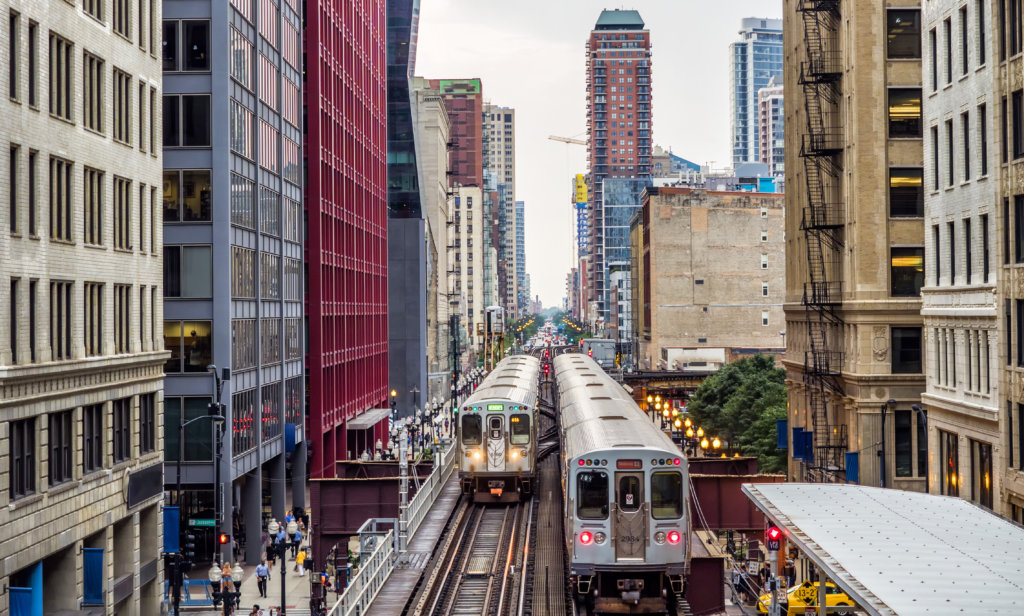
Duration: 3.5 hours
Price: Adult $65
- Tour price includes transit fees. Food/beverages purchased by guests.
- Tour begins and ends in the Loop.
- Walking distance: 1.5 miles
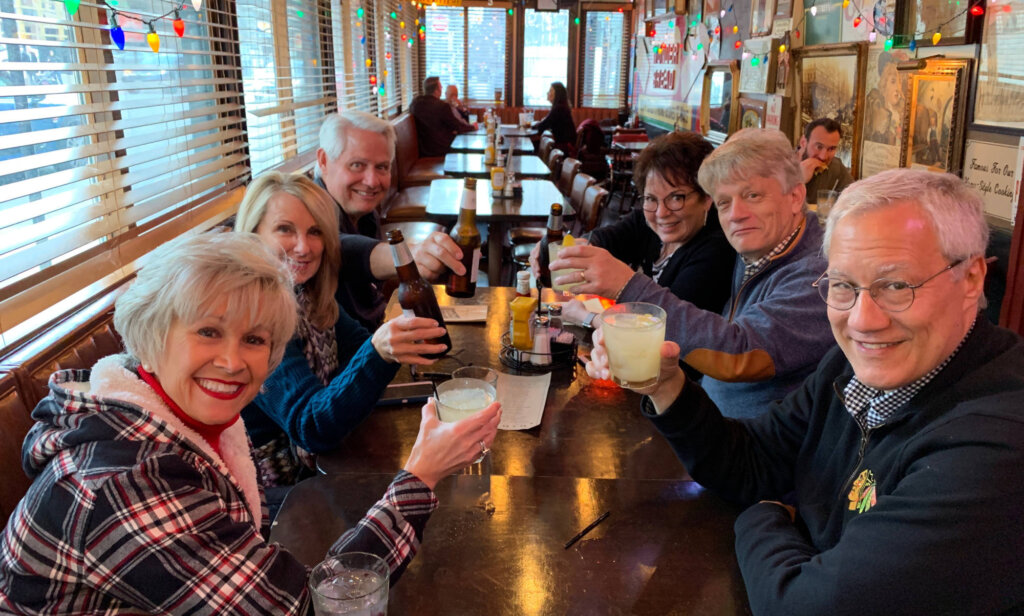
Duration: 3.5 hours
Price: Adult $65
- Price includes transit fees. Food/beverages purchased by guests.
- Tour begins and ends in the Loop.
- Walking distance: 1.1 miles
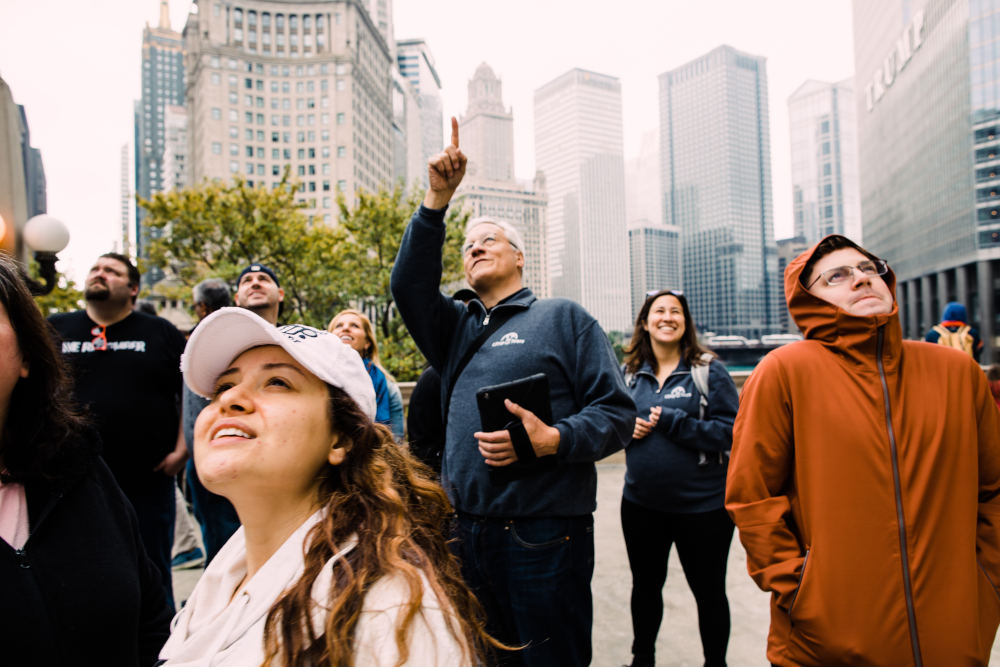
Duration: 3 hours
Price: Adult $65
- Tour price includes professional tour guide, train ride. Food/beverages purchased by guests.
- Tour begins and ends in the Loop.
- Walking distance: 1.5 miles
NEWSLETTER
Stay in the LOOP and subscribe to our monthly newsletter today!


